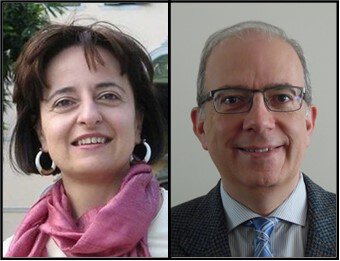Santarelli R, Scimemi P, Cama E, Domínguez-Ruiz M, Bonora C, Gallo C, Rodríguez-Ballesteros M, Del Castillo I. Preservation of Distortion Product Otoacoustic Emissions in OTOF -Related Hearing Impairment
Ear Hear. 2024
"Otoacoustic emissions are preserved in the ears of adult subjects with the common DFNB9 type of congenital profound deafness, a finding that widens the intervention window for gene replacement therapy" - Dr. Ignacio del Castillo
Summary:
Objectives: Attenuation of otoacoustic emissions over time has been reported for many patients with hearing impairment harboring mutations in the OTOF gene. In this study, the time course of changes of distortion product otoacoustic emissions (DPOAEs) has been analyzed in a cohort of patients in the light of tympanometry results.
Design: The changes of DPOAEs in 16 patients with OTOF -related hearing impairment were retrospectively analyzed.
Results: All but one subject showed DPOAEs bilaterally at the time of diagnosis. Three patients diagnosed as adults still had DPOAEs at ages of 27, 31, and 47 years, respectively. Follow-up was available for 7 children diagnosed at the age of 1 to 3 years, who still showed preservation of DPOAEs at ages of 5 to 16 years. The responses were absent or attenuated in amplitude at some follow-up appointments in association with type B or C tympanograms.
Conclusions: DPOAEs are preserved much longer than expected in a cohort of patients with OTOF -related hearing impairment. The previously reported loss of DPOAEs may have been caused in some children by increased middle ear impedance due to otitis media.
Why do you highlight this publication?
Otoferlin is a calcium-sensing protein involved in the exocytosis and replenishment of vesicles at the auditory ribbon synapse. Pathogenic variants in the gene encoding otoferlin result in the DFNB9 type of congenital profound hearing impairment. In these patients, auditory brainstem responses are absent, whereas otoacoustic emissions (OAEs) are initially present, although they decay over the years. Recently, it has been shown that DFNB9 hearing impairment can be treated succesfully with an AAV-based gene replacement therapy. To be a candidate for this novel treatment, normal OAEs must be recorded from the patient, as they indicate that the structure of the cochlea is preserved. It was thought that OAEs were lost in childhood, and this posed an age limitation to the treatment. This study shows that many subjects with DFNB9 keep normal OAEs until much older ages in adulthood, so the intervention window could be much wider and more patients could benefit of this novel therapy.
Publication commented by:
Dr. Ignacio del Castillo
Senior Scientist. Service of Genetics
GENETICS AND SENSORINEURAL PATHOPHYSIOLOGY - IRYCIS


